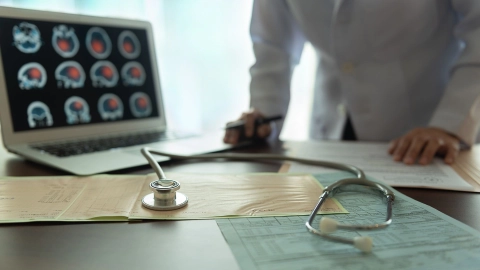ICD-Code I64: Stroke, not specified as haemorrhage or infarction
You had a stroke.
A stroke causes damage to parts of the brain. There are various reasons for this. If a blood vessel is narrowed or blocked, the brain does not receive enough oxygen-rich blood. This can cause damage to the affected brain tissue. When there is bleeding in the brain, the blood from the blood vessels leaks into the surrounding tissue. This can also cause damage to brain tissue.
There are various risk factors that favor a stroke. These include smoking, obesity, and blood pressure that is too high.
A stroke can cause a variety of symptoms. The symptoms depend on where the brain was damaged. The symptoms also depend on the extent of the damaged area. You may no longer be able to move various parts of your body properly, for example. You may not be able to speak properly.
Additional indicator
On medical documents, the ICD code is often appended by letters that indicate the diagnostic certainty or the affected side of the body.
- G: Confirmed diagnosis
- V: Tentative diagnosis
- Z: Condition after
- A: Excluded diagnosis
- L: Left
- R: Right
- B: Both sides
Further information
Source
Provided by the non-profit organization “Was hab’ ich?” gemeinnützige GmbH on behalf of the Federal Ministry of Health (BMG).



